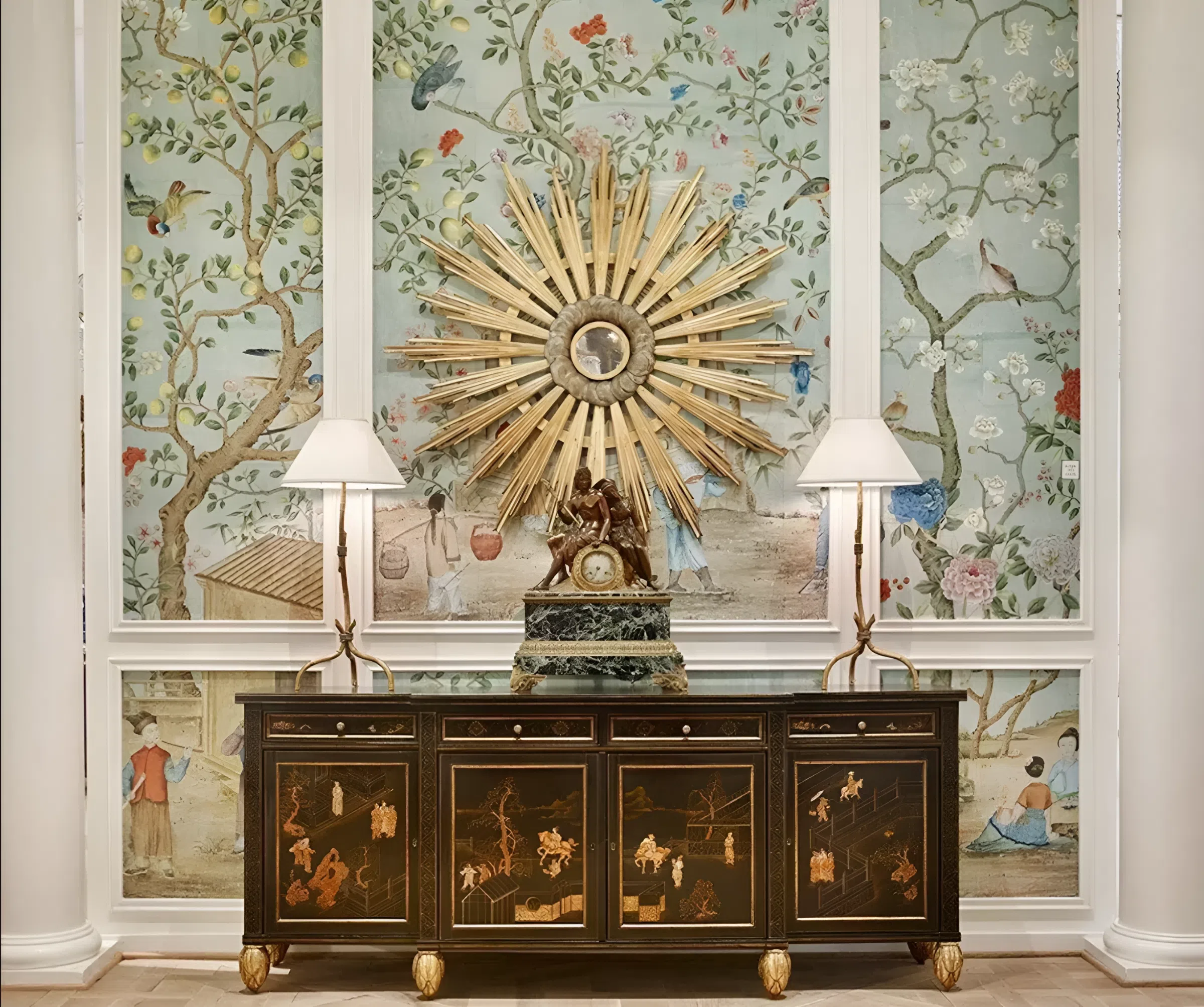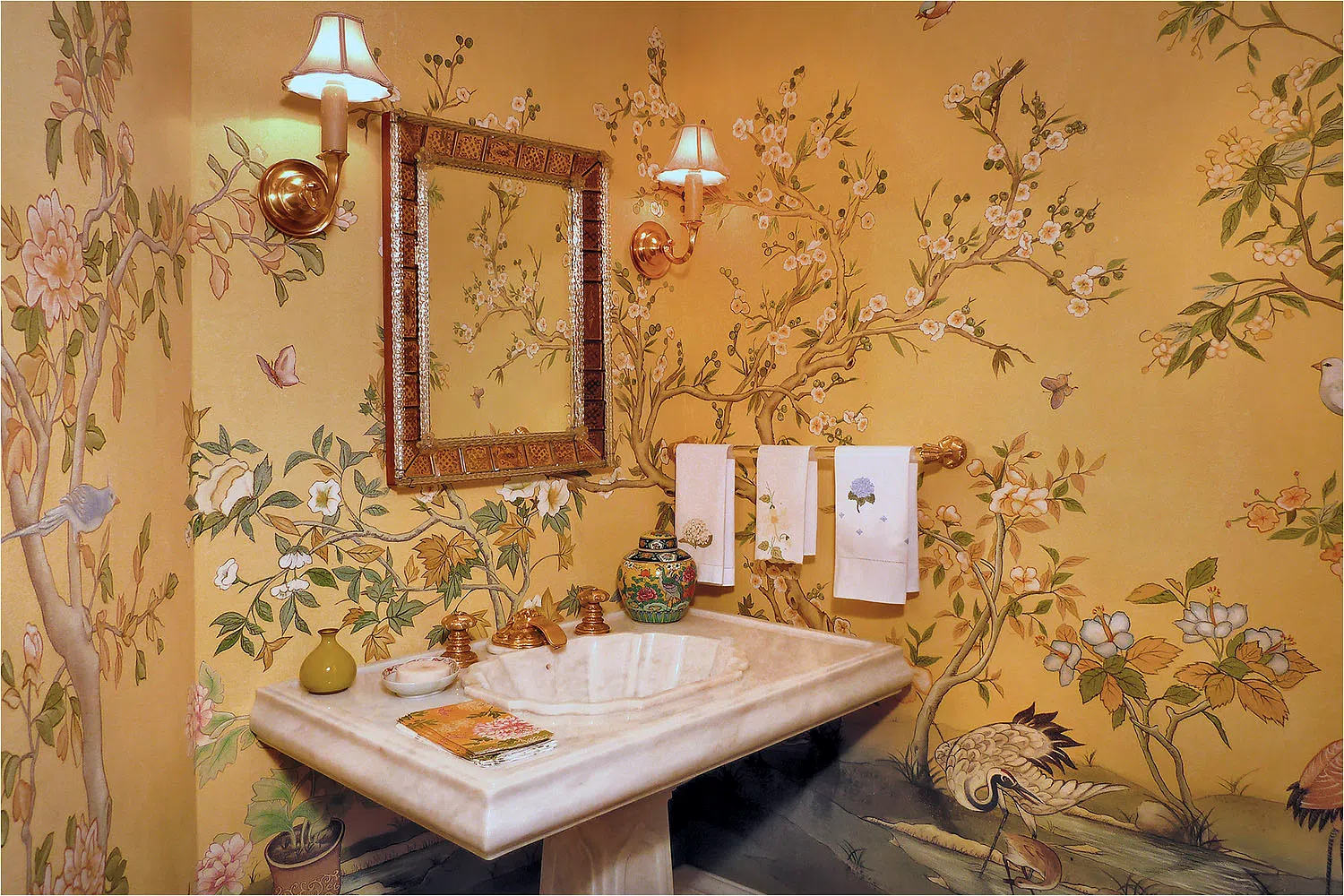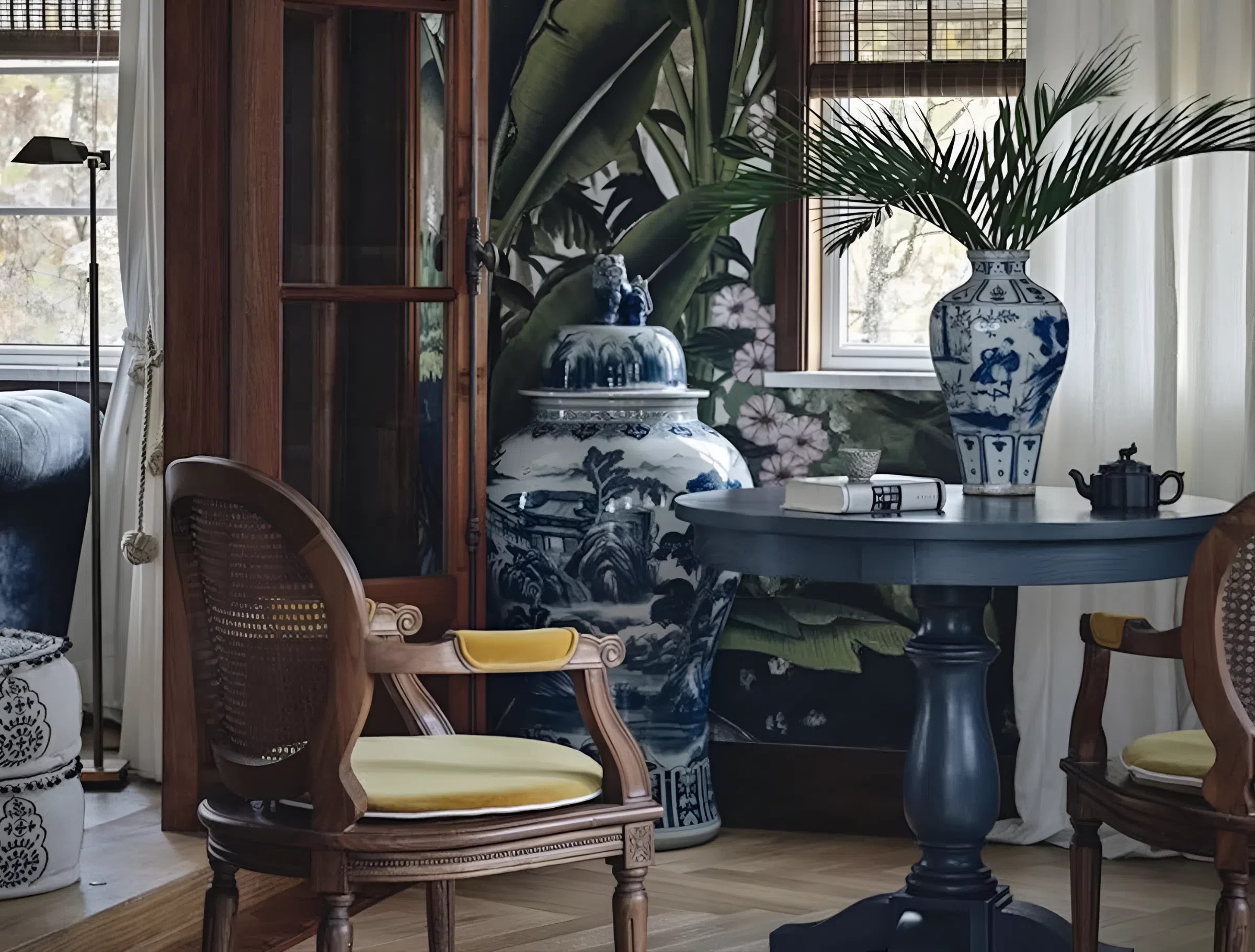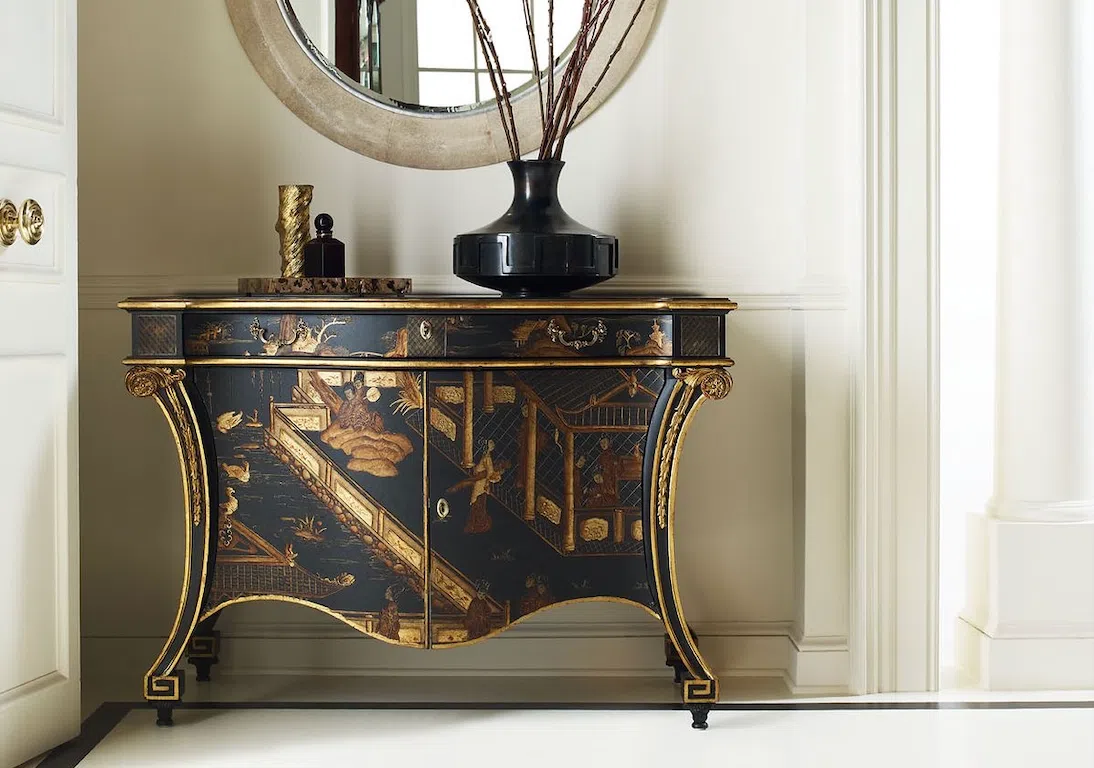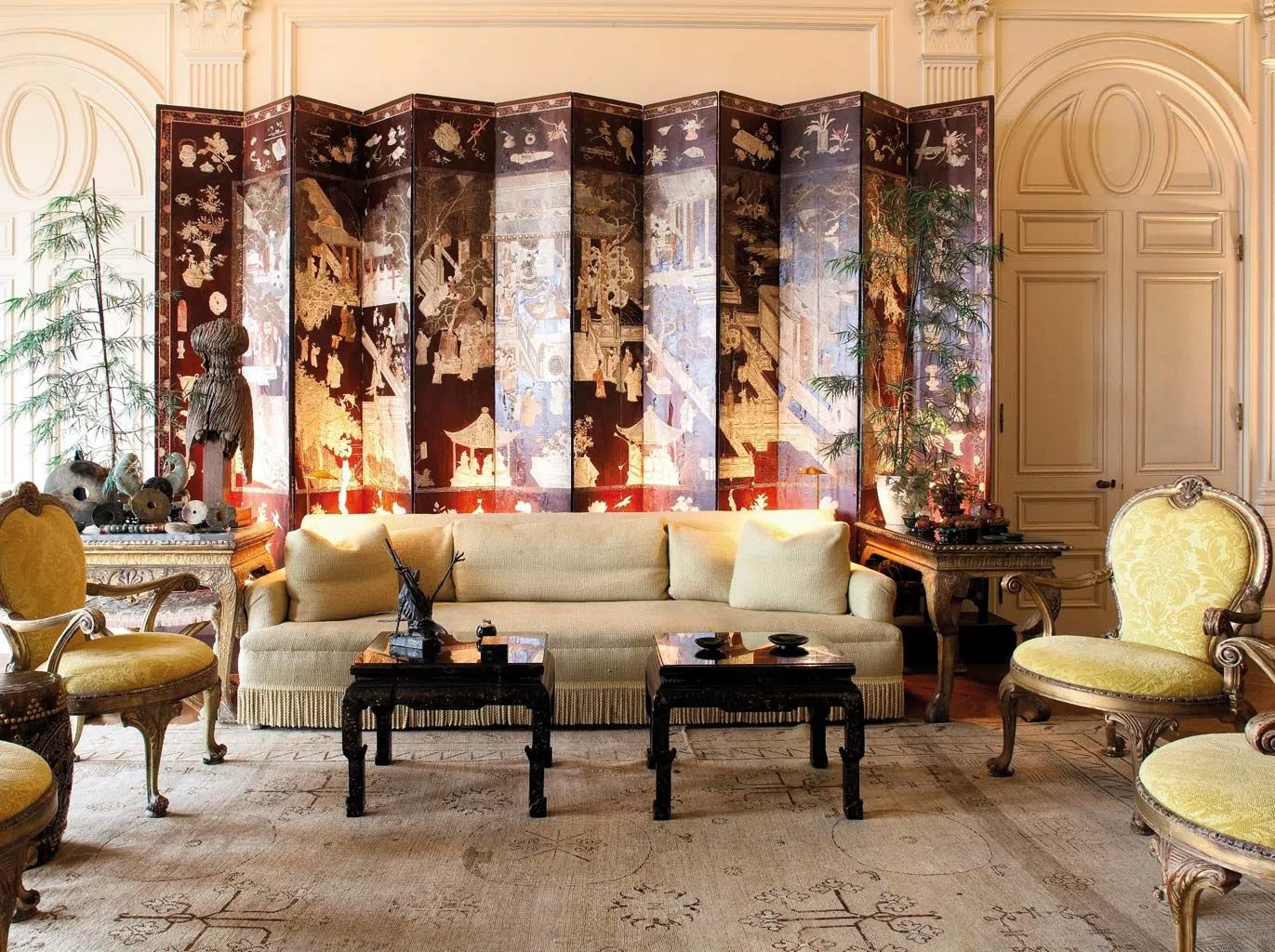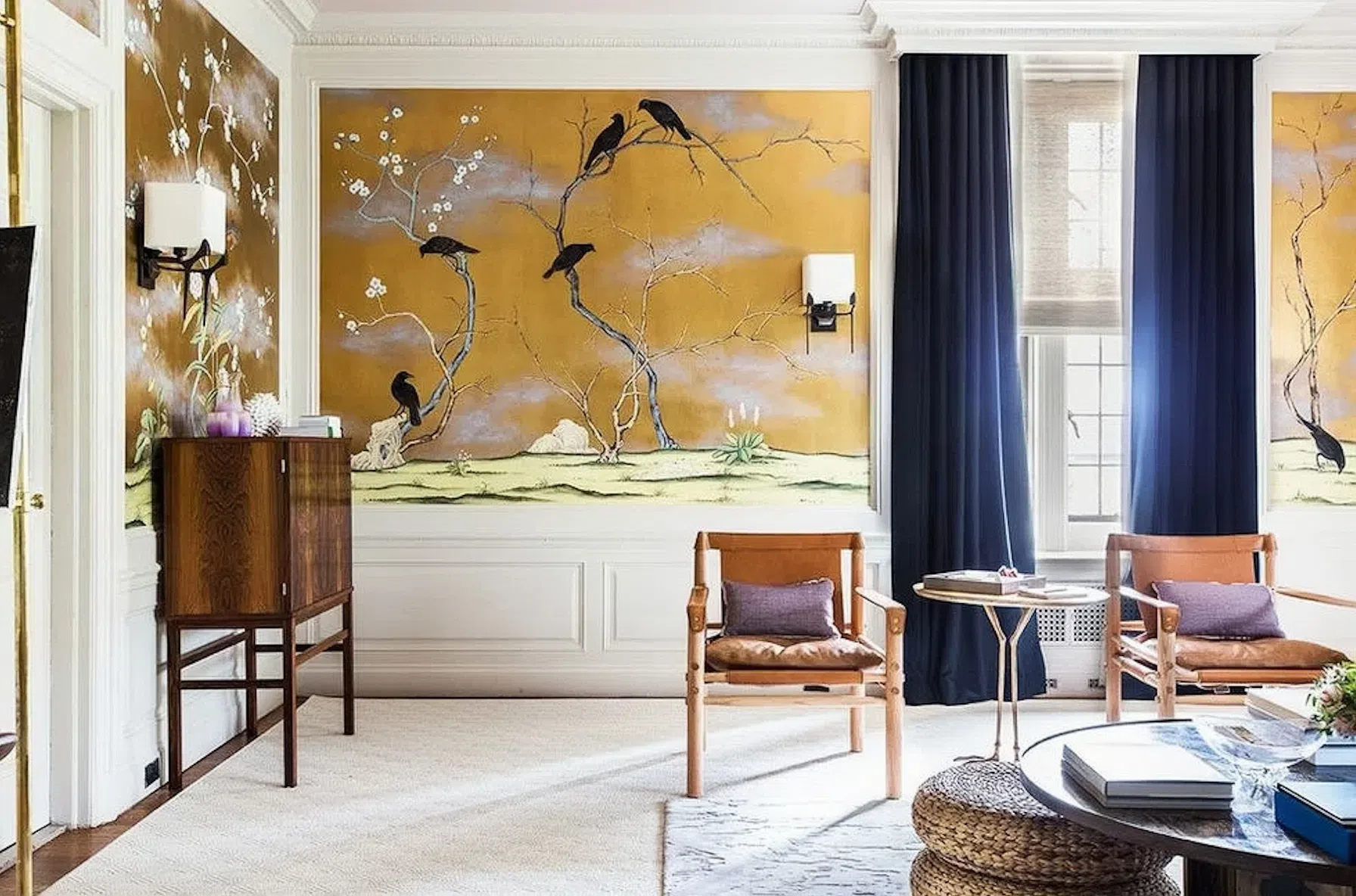Vanke Business Center, Foshan, Guangdong, China
Monday–Friday,
10:00–19:00 (UTC+8)
Vanke Business Center, Foshan, Guangdong, China
Monday–Friday,
10:00–19:00 (UTC+8)

During the 17th and 18th centuries, as trade with Asia was flourishing, the Old World's interest in Chinese culture and traditions also grew. In homage to this trend, the upper class adorned their parlors and boudoirs in the fashion à la Chinoise: lacquered furniture with carved legs, watercolor scenes in vibrant hues, refined porcelain... European artisans didn't merely replicate Chinese canons but rather adapted them to local tastes. This resulted in an airy and expressive style at the intersection of French Rococo and Chinese classicism.
In our era, where eclecticism is a key feature of interiors, chinoiserie is experiencing a new wave of popularity. Chinese traditional motifs and ethnic flair can playfully enhance a space, making it more dynamic and conceptual. It's not necessary to cover everything in silk or furnish with vases from the imperial palace; incorporating some key elements of this style into your interior can already suffice.
Picturesque paintings of blossoming gardens, graceful pagodas, exotic birds, and scenes of daily life are all signature details of chinoiserie. Typically, pure and vibrant colors like yellow, green, blue, and red, often accentuated with gold or silver, are preferred. In a modern interior, such paintings can adorn an accent wall or a panel behind the bed, bringing some vividness and a touch of Eastern magic to the space.
Elegant vases and painted tableware imported from China immediately captivated Europeans, who could produce something similar only in the 18th century. Even the renowned Limoges porcelain, a pride of France, was manufactured using a secret technique observed by a Jesuit priest from Chinese craftsmen. White sets with intricate paintings in turquoise and cobalt tones were particularly popular. Today, refined chinoiserie porcelain can still blend organically into contemporary spaces, placed on open shelves, mantelpieces, or behind glass facades.
Chinese furniture has always exuded luxury and sophistication due to its texture, exquisite painting, and glossy lacquer coating. The lacquering process demanded meticulous attention, with the number of layers reaching up to 30 or more. Another distinctive feature of chinoiserie is intricate carving, giving a sense of lightness and airiness. Cabinet doors and drawers were adorned with elaborate patterns, while table and dressing table legs took the form of animals or even multi-tiered pagodas.
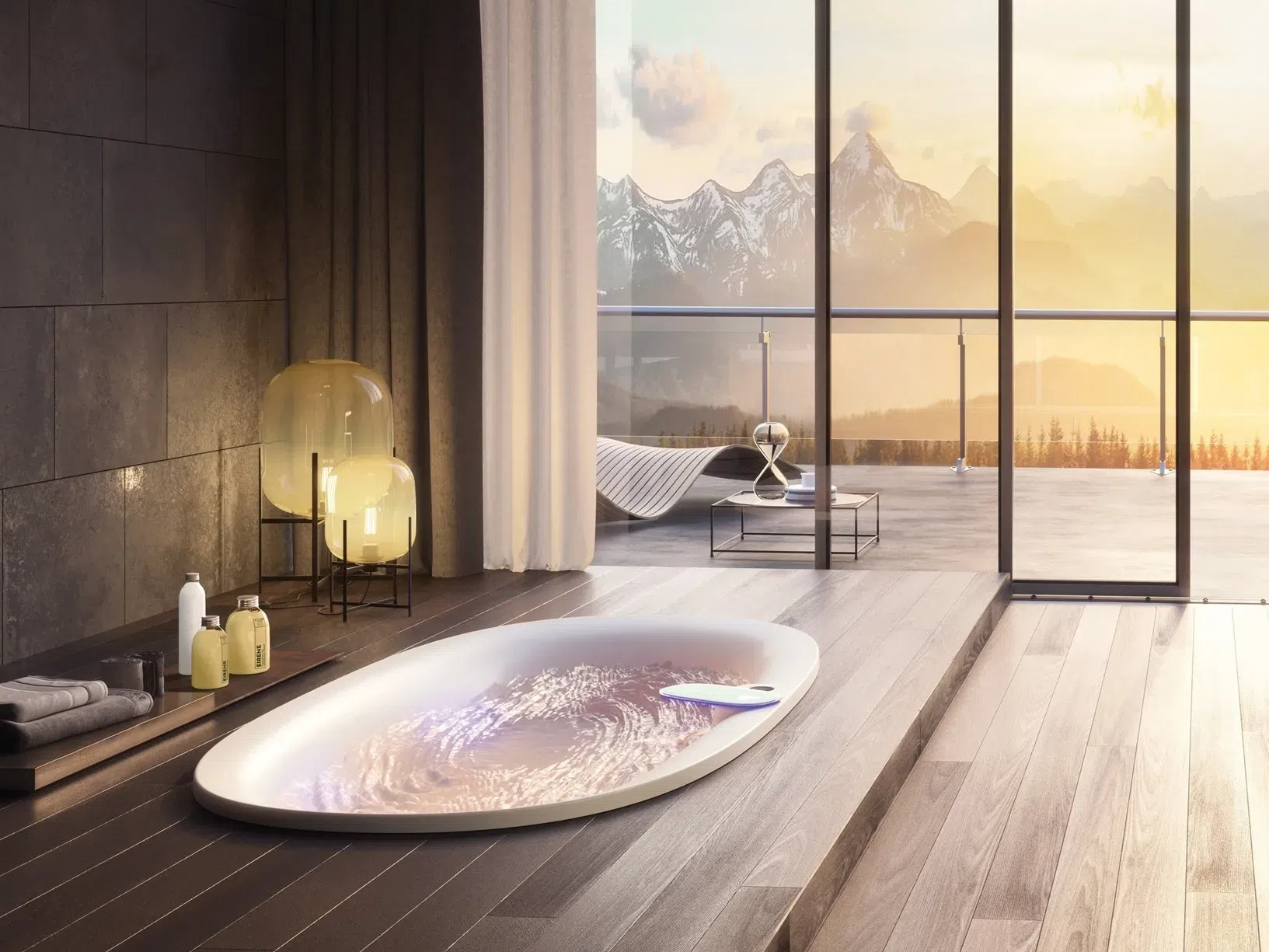
Selected materials from GLOBUS magazine that you shouldn't miss are in our newsletters. Choose and subscribe - we are already preparing a letter for you.

Arguably the most characteristic element of this style, screens give the feeling of mystery and intimacy. In the classic version, they consist of an even number of panels, adorned with rich decorations, silk, intricate carvings, and painted scenes. In modern settings, screens can be used not only for aesthetic but also practical purposes, such as zoning spaces and creating tranquil secluded corners.
For those who want to surround themselves with art, silk wallpapers featuring Chinese motifs can be an ideal solution. Originally, rice paper and silk fabrics were used, hand-painted with lapis lazuli, malachite, and other mineral-based pigments. Such wallpapers were costly, so only small sections of walls had such decoration. A modern alternative to Chinese silks can be textured wallpapers with bold Eastern prints or ethnic motifs. This adaptation of chinoiserie adds vibrancy to the interior, creating an atmosphere of warmth and coziness through its softness and tactility.
